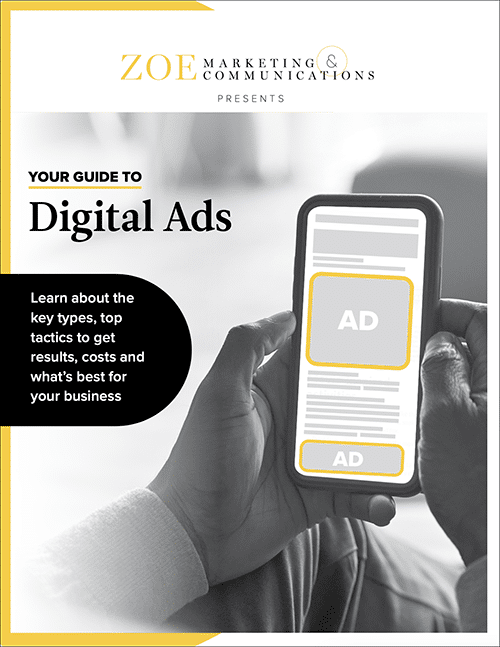
Download Your Digital Ads Guide
Learn how digital ads can help your business, including the tools, techniques and strategies to create successful campaigns.

Museums walk a tightrope between educating and entertaining their visitors, making marketing efforts a mixed bag.
The good news: In the past five years, 10% more people say art and history museums are “welcoming to people like me,” a study notes. The challenge is getting them to come inside — and come back — all on tighter budgets.
Here at Zoe Marketing & Communications, we understand the fluidity of your audience and the nuance of connecting with them.
So, what are the best digital marketing strategies for museums? Let’s focus on where to put your marketing dollars for the best results.
Learn how digital ads can help your business, including the tools, techniques and strategies to create successful campaigns.
Start by honing in on who you want to reach. With most museums allocating just 2-4% of their annual budgets to marketing, prioritizing your target audience is essential.
Broad audiences may include:
You may also focus on various demographics, such as:
With many options competing for limited funds, prioritizing your audience focus is critical. Test, track and adjust your strategy throughout the year to stay on course.
Museums have a built-in advantage: photogenic inventory. Engaging images of exhibits work well on Facebook, Instagram and even Pinterest.
On social media, be sure to target:
With Facebook and Instagram under Meta, you can place ads on both at once. Customize your reach by location, relationship status and more.
Don’t forget organic posts! These unpaid posts help build your audience and keep followers engaged with upcoming events and exhibits.
Even if people know your museum exists, they might not think of you when making plans. Strategically timed emails can change that.
Why it works: Emails are action-oriented and timely — especially as people make last-minute plans.
There are two main approaches:
When people search for “things to do,” your ads should appear. Search engine marketing (SEM) is a powerful digital tool for museums.
Museums excel at storytelling. But is content marketing right for you? It depends.
Even with tight budgets, museums can boost attendance with several digital strategies. Social media and email marketing are excellent starting points.
Ready to optimize your museum marketing budget? Talk to us at Zoe Marketing & Communications. We’ll help craft a plan that works for you.
Still exploring your options? Check out these helpful reads:

Learn how digital ads can help your business, including the tools, techniques and strategies to create successful campaigns.
As Zoe Marketing & Communications’ content manager, Kim Kovelle brings over 20 years of writing and editing experience in metro Detroit. She has strong roots in community journalism and a knack for making complicated topics make more sense.
